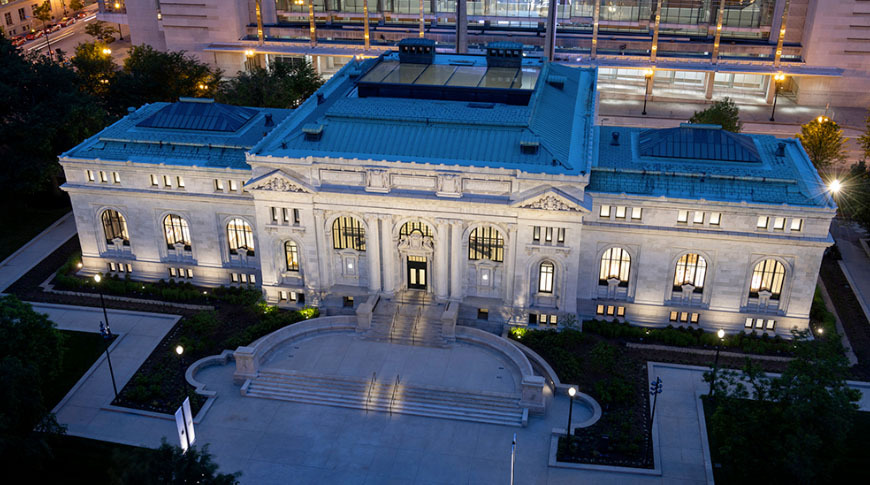Architecture studio Foster + Partners has received an American Architecture Award for its renovation and revitalization of the Carnegie Library of Washington D.C., which now hosts Apple Carnegie Library.
Opened in 1903, the building served as Washington D.C.'s first public library and its first desegregated public building. The building, initially designed by Ackerman & Ross, is well known for its Beaux-Arts style that draws heavily from French neoclassicism, gothic, and Renaissance elements.
The building had fallen into disuse between the turn of the twenty-first century and 2017 when Apple began renovating the library into the city's second Apple Store location, Apple Carnegie Library.
The renovation was undertaken by Foster + Partners, a British international architecture design headquartered in London. The renovation took approximately two years, with the location reopening in May 2019.
We are delighted Apple Carnegie Library is a 'Winner' at this year's American Architecture Awards. pic.twitter.com/7zkYOrPNxu
— Foster + Partners (@FosterPartners) October 8, 2020
The interior has been renovated using materials fitting the historical surroundings and inspired by the distinctive twentieth-century detailing. It is also notable for its effort in sustainability — the building features reintroduced natural ventilation and "makes generous use of daylight," according to the American Architecture Awards' writeup.
Like many of Apple's retail locations, Apple has hosted free "Today at Apple" sessions focused on photography, music production, coding, and videography within the store. Apple also filmed the first episode of "Oprah's Book Club" for Apple TV+ at the location as well.
Also housed in the building is the D.C. History Center, located on the second floor, as well as the Carnegie Gallery, located in the basement.
 Amber Neely
Amber Neely








 Chip Loder
Chip Loder
 Malcolm Owen
Malcolm Owen
 Marko Zivkovic
Marko Zivkovic
 Wesley Hilliard
Wesley Hilliard
 Christine McKee
Christine McKee


 William Gallagher
William Gallagher




-m.jpg)




3 Comments
Love it when Apple wins in categories outside of tech. What a great company.
Carnegie and his partner Frick built the greatest steel empire the world had seen (Ultimately it morphed into U.S. Steel). It was one of several entities that powered the American Golden Age of industry and, without it, we would never have built the industrial might that we did. So, it is one of the pillars that this country stands on today....
Workers worked long, hard hours usually 6 days a week 12 hours a day in very dangerous conditions. But, life was cheap.
This is where we came from. It is our roots. And this building grew out of the sweat, tears, misery and death of Carnegie Steel.
Fact checks:
(1) the Washington Public Library (as it was called when it opened) was NOT the first “desegregated” but rather the first “fully-integrated” public building in DC when it opened in 1903. Early in its history the library staff was segregated for a short period.